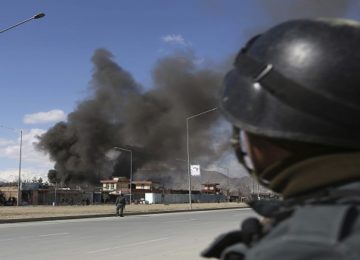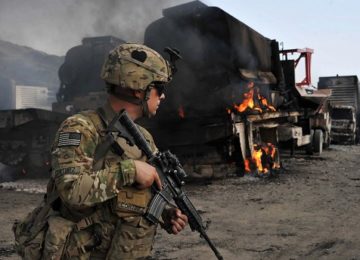Since the military transition from NATO to Afghan forces in 2014, Afghanistan has been in a downward spiral. Deteriorating security, a severe economic crisis, political fragmentation among the elite, and ethnic polarization have contributed to growing pessimism inside and outside the country.
Furthermore, regional consensus on Afghanistan, which was considered an important achievement during the past 16 years, is on the verge of collapse, because key players such as Russia, Iran and Pakistan have adopted a concerted effort to undermine the US mission in the country.
Meanwhile, China has used its growing economic leverage, and particularly the China-Pakistan Economic Corridor (CPEC), for a mediation role between Pakistan and Afghanistan in an attempt to reduce the impact of US pressure on Pakistan.
In fact internal political fragmentation within Afghanistan’s National Unity Government (NUG), amid growing ambiguity about the United States’ long-term agenda in Afghanistan, has further contributed to the degradation of the security situation and uncertainty about the political stability of the country.
However, the US and its NATO allies look at the Afghan National Defense and Security Forces (ANDSF) as a game changer. The best outcome for the US after more than 16 years of military commitment would be an ANDSF capable of defending major population centers against the insurgents.
But this investment in the context of the political fragmentation, ethnic polarization, and a dysfunctional government in Kabul remains fragile. In addition, bad governance and endemic corruption have seriously impacted the fighting capacity of Afghan forces.
The US and its NATO allies have invested tremendously for a viable state in Afghanistan, and their key objective is to salvage the current political process, which originated from the famous Bonn Agreement in December 2001. This will only be possible if the insurgents are prevented from breaking the current military stalemate and are convinced that they will not be allowed to force another brutal regime change in Kabul.
Meanwhile, we Afghans acknowledge that the new US strategy for the country through a mini-surge of an additional several thousand soldiers might not change the tide, but it will provide breathing space for the Afghan forces, and it could also send a clear message to the insurgents and their regional backers that the best outcome would be a negotiated settlement.
The US and its NATO allies in Afghanistan have enough resources and still enjoy broad public support in the country. However, there will be more hostilities and direct challenges toward their military presence from some of Afghanistan’s neighbors and regional powers using their proxies in the country.
Lack of clarity and resolve in the US military mission, and hesitation from its NATO allies for a significant long-term commitment in Afghanistan, has further weakened the US leverage in Afghanistan and thus strengthened the SCO’s position vis-à-vis NATO’s in the region.
In the context of the current geopolitical competition among major powers in Asia, it will be difficult to reach a regional consensus on the future of Afghanistan, and we risk moving toward a situation similar to that in Syria, where the US and its NATO allies will be militarily challenged by a new coalition led by Russia.
This article originally appeared on ASIA TIMES on April 12, 2018. Original link.
Disclaimer: Views expressed on this blog are not necessarily endorsed or supported by the Center for Research and Security Studies, Islamabad.








